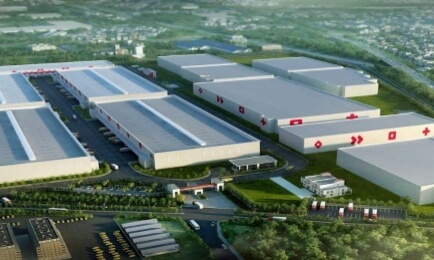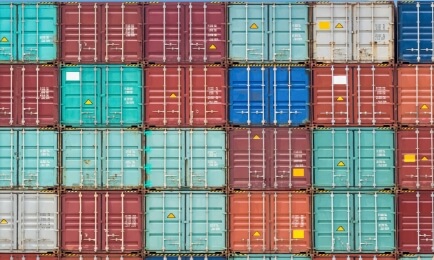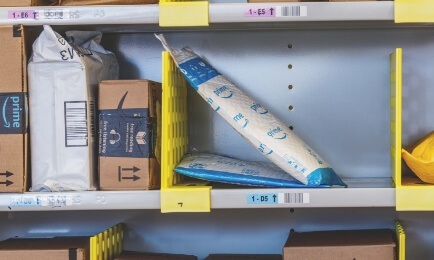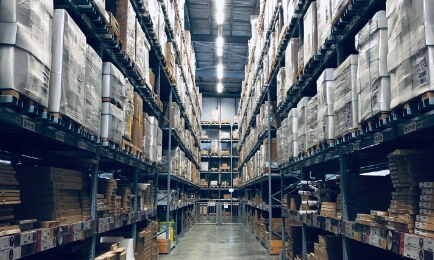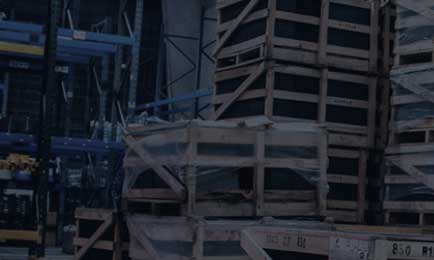The just-in-time approach is an inventory management approach used in the supply chains and logistics sector where raw materials and products are delivered to their required locations on time with minimal intermediate storage. Though the targets of JIT in supply chains and logistics sectors are similar, the definition used in the two industries to describe the process is slightly discrete.
In supply chains, just-in-time is a methodology followed where materials or components are delivered right at the time of requirement. This methodology is widely employed in manufacturing industries where the component arrival is matched with the time of their necessity in the production line.
The just-in-time approach in logistics focuses on optimising efficient methods of moving goods to their destination with minimal or no storage in between. With a well set just-in-time approach, companies can deliver goods to their end consumers with less incurred costs and reduced damage risk.
As an example, the Just-in-time approach in a vehicle manufacturing unit is followed to maintain minimum levels of inventory by relying on OEMs and tier suppliers. They deliver all the necessary parts that need to be fitted onto the car as-and-when the welded car frame reaches the respective stage in the production line. As the parts that need to be equipped get depleted, the next set of components arrive in time for the next production stage and the production cycle continues. Once manufacturing is complete, the manufacturer's logistics department employs the just-in-time approach to maintain a minimal amount of time between manufacturing and delivery of the vehicle.
Why is Just-in-time extensively used, and why does it matter?
Finished goods were considered as assets to companies. With the growing extent of production and efforts to meet customer demand, companies now view finished inventory as a burden that incurs additional expenses. The Just-in-Time approach has managed to eliminate the raw material costs, inventory and product storage costs that affect the smooth functioning of companies.
Manufacturers employing just-in-time systems need to set up an optimum synchronisation between the manufacturing cycle and delivery cycle of the material. Smooth JIT results require a good understanding of the supplier and the manufacturer in terms of explicit material type, time of delivery and quantity of products. With an efficient and quick transport from suppliers, manufacturers can focus on employing efficient just-in-time techniques in their production cycle that will further influence suppliers, manufacturers and consumers to maintain good relations and meet each other's demands.
Just-in-time inventory management advantages.
- Short production runs: When production runs are shortened, manufacturers can quickly shift from producing one product to the other. Adapting to a new product production is more accessible with Just-in-time as the approach takes away burdens of excess and obsolete stock of the previous item.
- Reduced inventory costs: Inventory carrying cost is the total of all expenses like depreciation, lost opportunity cost and warehousing costs that unsold goods procure. With inventory produced or purchased by keeping in mind just the required number, there is no need to have excess unsold inventory that takes up space and cost.
- Raw materials handling: Handling raw materials becomes effortless, as there are no excess numbers that require additional space and resources to manage excess inventory.
- Waste reduction: Minimum inventory stored means there are lesser chances of expiry, and the organisation is free from procured waste.
- Lesser investment: With less inventory, the sum invested for the same level of production decreases. This further increases the return on investment by reducing working capital investment to a greater extent and enhances profitability for the organisation.
Potential risks of Just-in-time inventory management.
- Risk of running out of stock: Since companies with Just-in-time bare minimum inventory levels, adapting to a sudden increase in demand becomes difficult. Businesses need to analyse and maintain a separate minimum level of inventory just-in-case the market demands increase.
- Price Shocks: The prices for individual components in Just-in-time are assumed to remain constant throughout the production cycle. With sudden spikes in market rates, the profit margin of companies will be significantly affected if pricing is not altered.
- Managing time frames: Smooth Just-in-time system can only be achieved when all the parties involved in the whole supply chain work with high coordination. JIT may fail if any of the suppliers fail to fulfil their responsibility and not respond to the requirements timely to other parties.
- Analysis, planning and implementation: With JIT inventory management, companies need to analyse their sales trends and variances with precision. Most companies have seasonal sales periods, where several products will need higher stock levels at specific periods in a year due to an increase in demand. Therefore, companies need to factor that into planning for inventory levels, ensuring that suppliers can meet different volume requirements at respective seasonal periods.
Stockarea is a digital warehousing company with a network of 200+ warehouses spread across the country. We provide numerous services like on-demand warehousing, first/middle/last-mile services, digital contract establishment and transparencies in inventory management techniques which will help you manage your JIT inventory smoothly. We assist you with strategies, models and reliable service providers to optimise your supply chain. Get in touch with Stockarea for optimal outcomes from your Just-in-time inventory management strategy.
Talk to an expert today 




